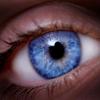Thats a false asumpton, antimuscarinics as an example dont change the acetylcholine levels yet increase dopamine, trough the muscarinic receptors, here's an overview:
http://www.mindandmu...em-interactionsEspecially this is interesting:
Preinfusion of scopolamine into the VTA diminished the facilitatory actions of cocaine on LDT stimulation-evoked NAc dopamine efflux through M5 receptors. They also suggest that the development of antagonists aimed at selectively disrupting M5 receptor function may be valuable in reducing abuse liability of psychostimulants.
M5 muscarinic and alpha7-nicotinic receptors, in combination, are important for prolonged dopamine release. polymorphisms of CHRM5 & CHRNA7 genes could be linked to hereditary schizophrenia.
Presynaptic muscarinic receptors in general, with the exception of M5, exert an inhibitory control on accumbal and striatal dopamine release. (This is why muscarinic antagonists are somewhat helpful in Parkinsonism).
Here's an excellent paper reviewing M5:
M5 mAChR kinetics
We have shown that LDT stimulation facilitates NAc dopamine
efflux in two distinct phases (Fig. 2A, Table 1). The first phase,
activated immediately with LDT stimulation and lasting �3 min,
is mediated by ionotropic glutamatergic and nicotinic cholinergic
receptors in the VTA (Forster and Blaha, 2000). The second,
activated 8 min after LDT stimulation and lasting 35 min on
average, is mediated entirely by a slow-activating metabotropic
M5 mAChR. M5 mAChRs have been found previously to mediate prolonged salivation (15– 60 min) in response to pilocarpine
administration in mice (Takeuchi et al., 2001). Also, N-methylscopolamine binding to M5 mAChRs in cultured cells has been
found to be the slowest of all mAChRs (association half-life of 6
min, dissociation half-life of 20.5 min) (Ferrari-Dileo et al., 1994).
Despite obvious methodological differences, these time constants
are strikingly similar to our own half-life rise (5.5 min) and decay
(16.5 min) estimates of the M5 mAChR-mediated component.
These results support our hypothesis that M5 mAChRs serve a
unique role in mediating prolonged excitatory effects on midbrain
dopamine neurons (Yeomans et al., 2001).
M5 mAChRs may serve to maintain these dopamine-dependent
behaviors. This hypothesis is consistent with the recent finding
that M5 mAChRs in the VTA are necessary for brain-stimulation
reward (Yeomans et al., 2000).
The majority of studies examining the role of mesopontine
nuclei in incentive-driven behaviors have focused on an anatomically adjacent cholinergic nucleus, the pedunculopontine tegmental nucleus (PPT). It is thought that the PPT is involved in
making associations between environmental stimuli and rewards
by mediating arousal or attentional mechanisms (Garcia-Rill,
1991; Inglis and Winn, 1995). In light of the present data, it is
likely that the LDT serves a similar f unction in incentive behaviors via activation of M5 mAChRs in the VTA.
In addition to their potential significance in motivational behaviors, the role of the PPT in Parkinson’s disease and the role of
the PPT and LDT in schizophrenia are being actively explored
(Zweig et al., 1989; Garcia-Rill et al., 1995; Yeomans, 1995;
Pahapill and Lozano, 2000). Postmortem analyses of brain tissue
from Parkinson’s patients indicate a significant loss of cholinergic
cells in the PPT, which is correlated with dopaminergic cell loss
in the substantia nigra (Jellinger, 1988; Zweig et al., 1989). Conversely, postmortem analyses of certain populations of schizophrenic patients show increased cholinergic cell numbers in the
pons (Karson et al., 1991; Garcia-Rill et al., 1995). Thus, midbrain
M5 mAChR regulation of prolonged dopaminergic activity in the
basal forebrain may represent a new target for pharmaceutical
intervention in cases in which dopaminergic hypoexcitation or
hyperexcitation is apparent. The observations that other receptor
types in the VTA are not affected by transient or permanent
inactivation of M5 mAChRs emphasize the feasibility of using
agents selective to the M5 mAChRs to regulate midbrain dopaminergic cell activity in vivo.
http://www.jneurosci.../RC190.full.pdf
Edited by medievil, 29 November 2011 - 09:51 AM.
















































